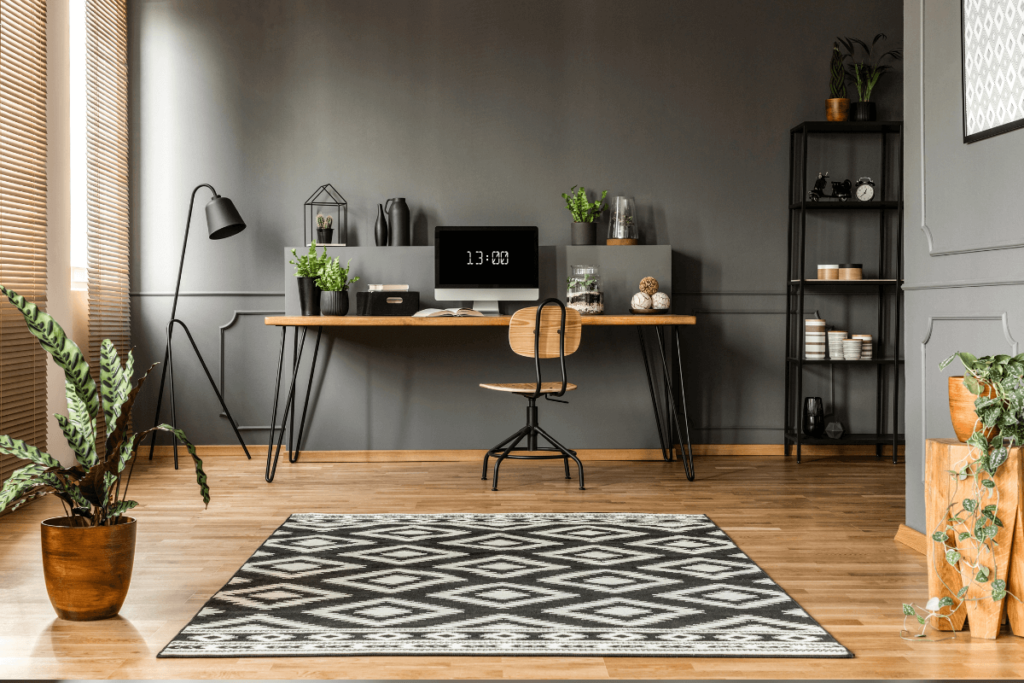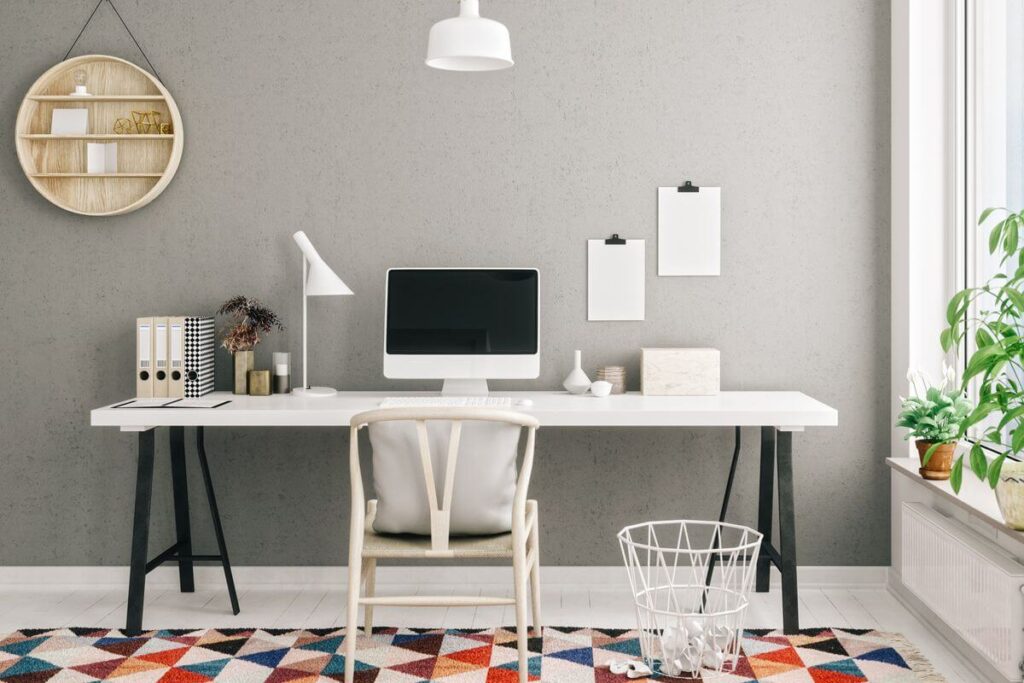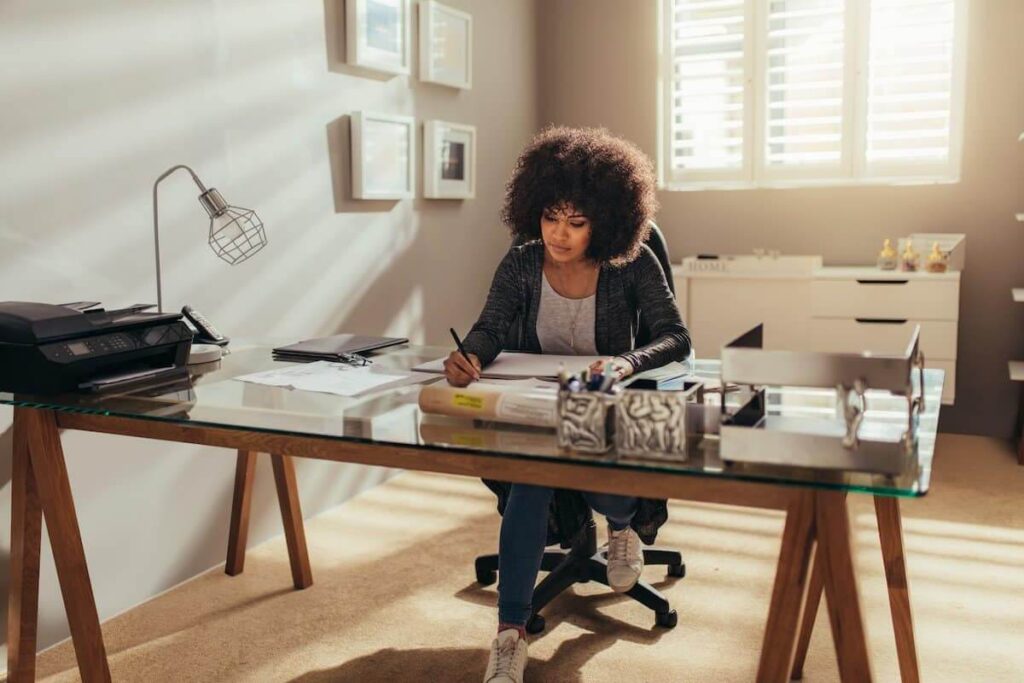Setting up a home office can be a transformative experience, enhancing both your productivity and comfort. Whether you are working remotely full-time or just need a dedicated space for occasional tasks, creating an efficient home office is essential. In this comprehensive guide, we will explore practical tips for designing your home office, focusing on functionality, aesthetics, and ergonomics. By following these tips, you can create a workspace that not only meets your professional needs but also reflects your personal style.
1. Choosing the Right Location
Evaluate Your Space
The first step in setting up a home office is choosing the right location. Ideally, select a quiet area with minimal distractions. Consider factors such as natural light, proximity to other household activities, and available space. A spare room, a corner in the living room, or even a section of your bedroom can serve as an effective home office.
Privacy Matters
Privacy is crucial for maintaining focus and productivity. If possible, choose a space that can be closed off from the rest of the house. This helps in creating a clear boundary between work and home life, reducing the chances of interruptions.
See Also: Top 10 Reasons to Choose Leather Sofas

2. Essential Furniture and Equipment
Invest in a Quality Desk
Your desk is the centerpiece of your home office. Choose a desk that suits your working style and provides enough surface area for your computer, documents, and other essential items. If you have limited space, consider a compact desk or a wall-mounted option.
Ergonomic Chair
Investing in an ergonomic chair is vital for your comfort and health. Look for a chair that provides good lumbar support, adjustable height, and comfortable seating. Ergonomic chairs help prevent back pain and improve posture, allowing you to work comfortably for extended periods.
Storage Solutions
Effective storage solutions are essential for maintaining an organized workspace. Utilize shelves, cabinets, and drawers to keep your office supplies, documents, and equipment neatly stored. This not only helps in keeping your workspace tidy but also enhances productivity by reducing clutter.
3. Lighting and Ambiance
Maximize Natural Light
Natural light can significantly impact your mood and productivity. Position your desk near a window to take advantage of natural light during the day. This not only reduces the need for artificial lighting but also creates a more pleasant working environment.
Artificial Lighting
In addition to natural light, ensure you have adequate artificial lighting for late-night work sessions. A combination of ambient, task, and accent lighting can create a well-lit and inviting workspace. Consider adding a desk lamp with adjustable brightness to focus light on your work area.
Create a Cozy Ambiance
Incorporating elements like candle jars can add a cozy and relaxing ambiance to your home office. The soft glow and pleasant scent from candle jars can create a calming atmosphere, making your workspace more enjoyable. Additionally, candle jars can be a stylish decorative element that enhances the overall aesthetic of your office.

4. Organizing Your Workspace
Declutter Regularly
A clutter-free workspace promotes productivity and reduces stress. Make it a habit to declutter your desk and office area regularly. Discard unnecessary items, file away documents, and keep only the essentials within reach. This practice helps maintain a clean and efficient workspace.
Use Organizational Tools
Utilize organizational tools such as file organizers, cable management solutions, and desk trays to keep everything in order. Labeling your storage solutions can also help in quickly locating items, saving time and reducing frustration.
Personal Touches
Adding personal touches to your home office can make it more inviting and reflective of your personality. Incorporate items such as photos, artwork, and plants to create a space that inspires and motivates you. Personal touches can make your home office feel more like your own, enhancing your overall work experience.
5. Ergonomics and Comfort
Monitor Placement
Proper monitor placement is essential for reducing eye strain and promoting good posture. Position your monitor at eye level and about an arm’s length away from your eyes. This setup helps in maintaining a neutral neck position and prevents discomfort.
Keyboard and Mouse Setup
An ergonomic keyboard and mouse setup can prevent strain on your wrists and hands. Ensure that your keyboard is at a comfortable height, allowing your arms to rest naturally. Using a mouse pad with wrist support can also alleviate pressure and enhance comfort.
Standing Desk Option
Consider incorporating a standing desk option to vary your working positions throughout the day. Standing desks can help reduce the negative effects of prolonged sitting, such as back pain and decreased circulation. Alternating between sitting and standing can improve your overall health and productivity.
6. Technology and Connectivity
Reliable Internet Connection
A reliable internet connection is crucial for a productive home office. Ensure that your workspace is within range of your Wi-Fi router or consider using a wired connection for better stability. A fast and stable internet connection is essential for video conferencing, online research, and other work-related tasks.
Essential Equipment
Invest in essential equipment such as a high-quality computer, printer, and scanner. Depending on your work requirements, you may also need specialized equipment like a graphics tablet or multiple monitors. Having the right tools at your disposal can significantly enhance your efficiency and productivity.
Backup Solutions
Implement backup solutions to protect your important data. External hard drives, cloud storage, and automated backup software can safeguard your work against data loss. Regularly backing up your data ensures that you can recover important files in case of hardware failure or other issues.

7. Productivity and Time Management
Set a Schedule
Establishing a consistent work schedule can help in maintaining a work-life balance and improving productivity. Set specific working hours and stick to them as much as possible. Having a clear schedule helps in creating a routine and reduces the likelihood of overworking.
Take Breaks
Taking regular breaks is essential for maintaining focus and preventing burnout. Incorporate short breaks into your work schedule to stretch, walk around, and relax. Breaks can help in recharging your energy and improving overall productivity.
Time Management Tools
Utilize time management tools such as calendars, to-do lists, and productivity apps to stay organized and on track. These tools can help in prioritizing tasks, setting deadlines, and managing your time effectively. Effective time management is key to achieving your work goals and maintaining a healthy work-life balance.
8. Creating a Positive Work Environment
Minimize Distractions
Minimizing distractions is crucial for maintaining focus and productivity. Identify common distractions in your home and find ways to reduce or eliminate them. This could involve setting boundaries with family members, using noise-canceling headphones, or creating a dedicated work zone.
Stay Connected
While working from home can be isolating, it’s important to stay connected with colleagues and professional networks. Regularly communicate with your team through video calls, emails, and messaging platforms. Staying connected helps in maintaining a sense of community and collaboration.
Motivation and Inspiration
Incorporate elements that inspire and motivate you in your home office. This could be motivational quotes, vision boards, or items that remind you of your goals. Surrounding yourself with positive and inspiring elements can boost your morale and keep you focused on your objectives.
9. Health and Wellness
Exercise and Movement
Incorporating regular exercise and movement into your daily routine is essential for maintaining physical and mental well-being. Simple exercises such as stretching, yoga, or short walks can help in reducing stress and improving overall health.
Healthy Eating Habits
Maintaining healthy eating habits is crucial for sustaining energy levels and focus. Keep healthy snacks and water within reach to stay hydrated and nourished throughout the day. Avoid excessive consumption of caffeine and sugary foods, which can lead to energy crashes.
Mental Health
Paying attention to your mental health is just as important as physical health. Take time to relax and unwind, practice mindfulness, and seek support if needed. A healthy mind is essential for maintaining productivity and overall well-being.
10. Continuous Improvement
Evaluate and Adjust
Regularly evaluate your home office setup and make adjustments as needed. As your work requirements change, your workspace may need to evolve to accommodate new needs. Continuously improving your setup ensures that it remains functional and conducive to productivity.
Stay Informed
Stay informed about the latest trends and best practices in home office design. Research new tools, furniture, and techniques that can enhance your workspace. Staying updated ensures that your home office remains efficient and up-to-date.
Feedback and Adaptation
Seek feedback from colleagues or family members about your home office setup. They may provide valuable insights and suggestions for improvement. Being open to feedback and willing to adapt can lead to a more effective and enjoyable work environment.
Conclusion
Creating an efficient and comfortable home office is a multifaceted process that involves careful planning and continuous improvement. By choosing the right location, investing in essential furniture and equipment, and maintaining an organized and ergonomic workspace, you can enhance your productivity and well-being. Incorporating elements like candle jars can add a cozy ambiance, making your workspace more enjoyable. Remember to prioritize your health and wellness, stay connected with colleagues, and continuously evaluate and adjust your setup. By following these tips, you can create a home office that meets your professional needs and reflects your personal style.
